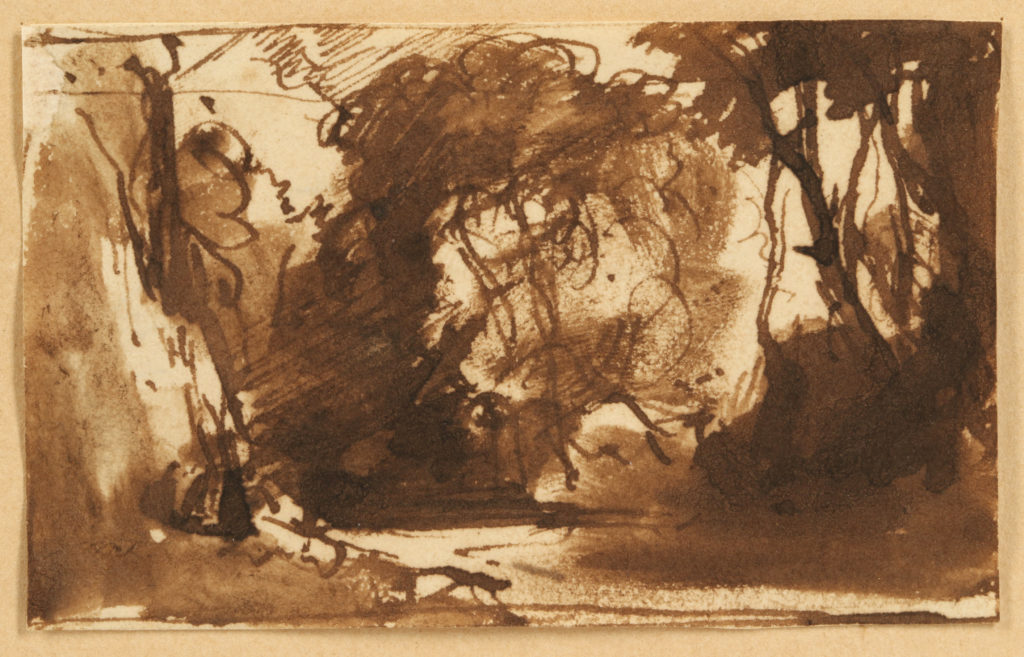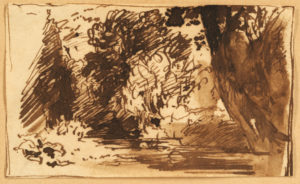Rediscovered John Constable Drawings
Two previously unpublished drawings by celebrated British landscape painter John Constable RA (1776–1837) have recently come to light, offering collectors and scholars new insight into the artist’s working methods. These rare studies, executed in pen, brown ink and wash, showcase Constable’s compositional approach during the final decade of his life.
The works were found in a forgotten box of early British drawings brought in by the family of playwright Christopher Fry. Hidden under a bed for many years, the collection included four modestly framed sketches, each labelled with Constable’s name. Their old mounts and untouched condition suggested they had not been examined for decades.
Lot 114. John Constable RA (British 1776 - 1837)
A Woodland Glade; preparatory study for 'Jaques and the Wounded Stag', c. 1832-5.?
New Evidence Supporting the Attribution
On removal from the frames, pencil inscriptions were revealed on the mounts. These were recognised as the handwriting of Leonard Duke, a respected collector of British works on paper in the mid-20th century. Duke’s personal catalogue, now held by the British Museum, confirmed he had purchased and sold these drawings as works by or attributed to Constable.

John Constable RA (British 1776 - 1837)
A Woodland Glade; preparatory study for 'Jaques and the Wounded Stag', c.1832-5.?
Further research revealed that the sketches were drawn on Whatman writing paper, a favoured material of Constable. Known for its fine texture, this paper was used by the artist for many of his studies and letters. Paper analysis added further confidence to the attribution.
A Shakespearean Subject
The subject matter aligns with one of Constable’s late projects, an illustration of Jaques and the Wounded Stag from Shakespeare’s As You Like It. Between 1832 and 1835, Constable is known to have produced preparatory drawings for this scene. The newly uncovered works show figures set within woodland glades, capturing the drama and stillness of the moment. The medium of pen, ink and wash allowed Constable to experiment with light and composition in a free and expressive manner.
A Significant Find for Collectors
These drawings offer a rare opportunity to acquire original work by one of Britain’s most important painters. While Constable is best known for his oil paintings of the English countryside, his works on paper reveal the depth of his artistic exploration and his sensitivity to narrative.
For scholars and collectors, these newly surfaced drawings add to the understanding of Constable’s creative process and demonstrate his continued engagement with literature and landscape in his later years.
Interested in the value of your Old Master or 19th-century artwork?
Our specialists in Old Masters & 19th Century Art are pleased to offer complimentary valuations and are now inviting consignments.
Contact: pictures@chiswickauctions.co.uk